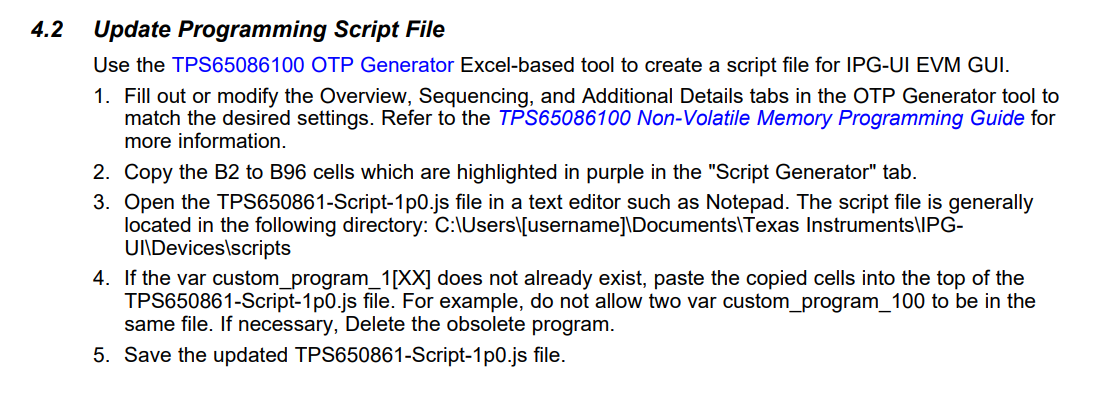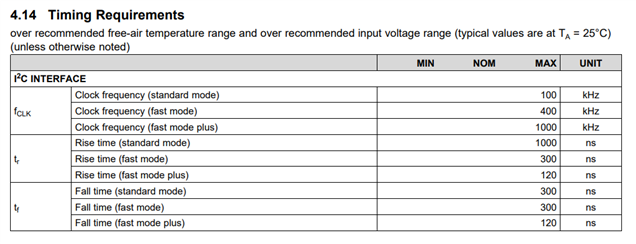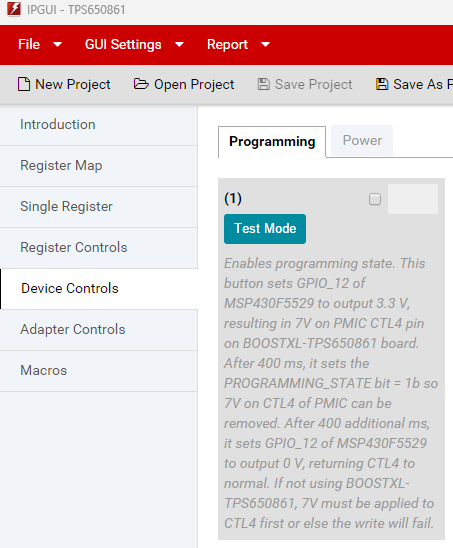Other Parts Discussed in Thread: IPG-UI, BOOSTXL-TPS650861, USB2ANY, , MSP430F5529, TPS65086, TPS650861
Tool/software:
I am attempting to use the TPS65086100 OTP Generator V2p5 to import into the IPG-UI in order to program the above EVM. The JSON (collated from the "Using IPG-UI" tab in the "Script Generator" sheet of the calculator, see the JSON below) fails to import, see the error below.
- What is the expected structure of the JSON accepted by the IPG-UI, is there documentation that indicates what structure it should follow
- Is there a better method to generate the JSON from the Generator that I am missing
"The file selected does not appear to be a valid device description file. Please verify the file and try again. If this error continues it could be due to a file that is not compatible with this version of the GUI. Please check www.ti.com for updated device description files"
The related device description file (copied from the generator):




